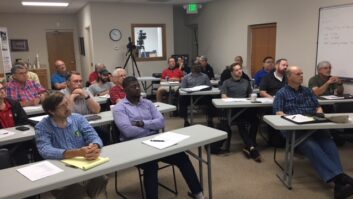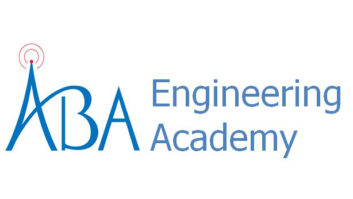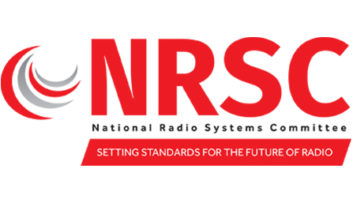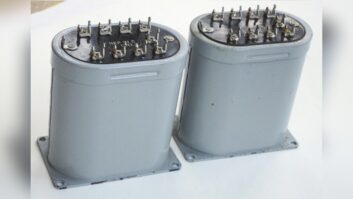Broadcasting may not be unique in this, but it certainly presents a severe case of a regulated industry.
My view is that at least 13 layers of regulation burden broadcasting. The layers go by names like FCC, FAA, OSHA, BOCA, DOJ, Copyright Tribunal, Homeland Security, etc.
On the operating station level, engineering compliance usually is the task of the chief engineer. FCC regulatory compliance is especially challenging because the commission pragmatically regulates through four mechanisms:
- Regulation: 47 CFR overall but Parts 73 and 74 specifically, nearly 1,000 pages of little tiny type;
- Case law: The specific hearing and court decisions of precisely what all those regulations meant;
- Policy: The emphasis placed on regulations and how the FCC feels they should enforce them;
- Editorial license: “That may not be what the reg states, but this is what we meant.”
Brain fade occasionally takes over at stations, especially among neophytes who think that ratings or the next 20-minute music sweep is the most important issue.
The most important issue is the station license. Without it, everybody might as well go home.
Spirit guide
In the present, permissive environment, one of the few ways your license can be challenged is if you have been found guilty of a regulatory offense. So-o-o-o-o, everyone’s goal should be to avoid these. A few dollars properly spent in this effort can save hundreds of thousands as well as the gut-wrenching worry of whether you will be challenged during the long renewal periods we enjoy these days.
Further, no one wants to be associated with a Notice of Apparent Liability. Even the smallest infraction that happens on your watch can destroy a career.
We’re professionals, so no detail is too small not to get right. Let’s get down to cases.
Your “spirit guide” for compliance should be the FCC station checklist followed by their inspectors and those in the volunteer inspection program. These lists for AM and FM were updated a few years ago with little fanfare. One interesting emphasis change was a sort of helpful stream-of-consciousness narrative about many of the points made.
The centerpiece of compliance is the public file. We could fill this issue of RW with a discussion of that document so we’ll limit ours to a few specific engineering items.
Paperwork
The license. Make certain you have the last full print that includes the station’s facility description and the latest renewal notice. Copies of any current construction permit applications or grants should be there with the other licenses. Special night operation “permission” letters for AM stations should be included as well. A document often missing is the letter appointing the designated chief operator. Make certain it’s correct as to who that person is right now. I once encountered a PF letter appointing a chief operator; that person had died a decade before.
These documents must be available at the station’s main control point as well.
Coverage maps are required and should be specific, accurate and correlated to the station’s public file. At the moment the Media Bureau’s Web site will print you a coverage map for your FM station. I strongly suggest that in addition to those gorgeous coverage maps your consulting engineer has provided, you print and place these FCC beauties in the PF. Even the most contentious person could not argue with the commission’s own determination.
Location. A few years ago, as part of the federal government’s thrust to make the nation Internet-accessible, the FCC allowed stations to place public files on the Internet. The physical location of those files can be anywhere; but they must be accessible from the station’s legal “studio” location.
The job of keeping the access terminal and printer – remember, copies have to be made available to all who examine the public file – probably will fall to you. If the terminal doesn’t work or the files cannot be accessed by the reviewer, you don’t have a public file. Keep it running, keep it connected to the file and check it often.
Organization. Whether in printed form or electronic, keep the public file neat, well organized and limited to what is required. If the reviewer cannot find what’s supposed to be there, it doesn’t exist.
At the site
Covering the records of your bailiwick, let’s start at the transmitter.
Do your transmitters, specifically, need to be licensed? No. Do they need to be type-accepted? Yes, and you should keep a record of that acceptance as well as the proof of performance you made when the transmitter was put online, if less than two years ago, or the last two years of annual proofs.
Incidentally, for multiple reasons, you need a proof for every time you change or install a stereo generator or an SCA generator as well as when you turn on IBOC. The larger part of the present proof requirement is occupied bandwidth, so make it a habit to do an OBW check whenever you change equipment, modes or configurations and make a record.
Let’s talk about auxiliary transmitters. Tremendous latitude is given for staying on the air in emergencies or under duress. Our regulators expect broadcasting to come through in challenging times and so they give us the flexibility to do so. In a disaster the magnitude of the Asian tsunamis of last year, broadcasting would become our foundation of civil order, and the government wants us on the air and responding to community needs.
However there is a discipline and formality for aux facilities that must be followed. Previous main facilities can be licensed as aux easily, by filing a separate Form 302 referencing the previous license. For once, here is a procedure that is simple and a benefit to the station. A quick example is a nondirectional FM that upgrades to a directional at the same site to expand coverage. The new DA is a main and the old NDA is relicensed as an aux.
Here’s where policy and case law come into the picture. When is a location a transmitter site? If your station has an antenna, line, transmitter and power all connected ready to run, the commission has spoken; it’s a transmitter site. This system should be licensed.
If you have an antenna on the roof of your studio and a spare exciter in the closet, that’s just advanced planning.
I’d rather have the system connected, licensed and ready. This beats swimming through the tsunami to the closet.
Colors and numbers
Make certain that you have current authorizations of auxiliary Part 74 licenses such as your STLs. Remember also that if you change power, mode, azimuth, coordinates at either end of your STL/ICRs or frequencies, you’ll need a new license. With the requisite prior coordination, relicensing takes time; so if you need a new ticket, start on it today.
The largest single capital investment at many stations is the tower. If you own it, you’re responsible for the lighting, marking and maintenance. If you do not own it, make absolutely certain your landlord fulfills its responsibilities religiously. This safety circumstance, if unmet, is one of the few times that by default all licenses on the tower must take action or they are to blame.
Double-check that the tower has been registered, if necessary, with the right number and that a copy of the registration certificate is in the engineering files; if the tower is yours, make sure every tenant has a copy.
Towers must be inspected every quarter. Most important, any automatic, required, light monitoring alarm system must be tested as part of this inspection. Outages of the top beacon or any flashing features must be reported to the FAA and a log of outages and restoration of all lighting must be maintained.
The gold standard for paint on towers are the white and international orange official paint chips. The human eye can discern more shades of red than any other color, so even a near-blind inspector can call you on this with a simple side-by-side comparison.
AM towers with hot bases must be fenced. OET-65 compliance distances must be met to prevent just plain folks from wandering into high RF fields. Remember to display the registration number of your towers at the tower. In one of those editorial license situations we mentioned, also display them at the nearest place(s) where the general public can come to the towers.
My favorite example of careful compliance is the station that posted its tower sign and numbers on the nearest point the public could come, a scenic overlook – located on the next ridge!
Do not forget that every site needs an “RF Plan” under OSHA regulations and said plan has to be reassessed and updated every year.
Mandatory signs are a sign of the times; make certain RF and other hazard signs are posted, including the pedestrian “No Trespassing.” Also make sure signs are in the proper sequence as the public encounters them: Notice, Possible, Caution, Warning, Danger and Stop, in that order. If your site is close to Quebec Province, it would be wise to provide the text in French as well; if Mexico, in Espanol .
AM stations need a drawing of the antenna system with values and the latest determination of your base impedance if you measure power directly.
Indirect stations, both AM and FM, need a record of the efficiency factor and how it was determined (i.e., calorimeter, manufacture’s determination, etc.)
Between the site and a hard place
If your station is fed from central origination but requires a local studio, can you readily switch to programming from that studio; and is adequate equipment operational at that local studio to originate meaningful effective programming?
How about the transmitter POTS control line? Is that line used only by the station for control and no one else? Recently at a multiple tenant site it was discovered that the burglar alarm company had grabbed the station’s control line for their supervisory system connection to the outside world. This explained to the station why the line was busy so much as automatic calls were made to open and close the gate and doors.
Is your head swimming? Yes? Good. That’s why you’re paid the big bucs.
The FCC checklists mentioned are at www.fcc.gov/eb/bc-chklsts/.
If RW readers have the interest, we’ll revisit compliance and dig a little further into the topic. Write to me at [email protected].












